I’m excited to share with you about one of the most recognizable landmarks in the world – the Flavian Amphitheatre, or as you may know it, the Colosseum in Rome.
If you’re planning a trip to Rome, make sure to include a visit to this iconic structure on your itinerary. You can choose to explore it on your own or opt for a guided tour, such as the popular “Highlights of Colosseum Tours”, which offers plenty of information about the site and the opportunity to ask questions along the way.
Despite enduring damage from natural disasters and neglect over the centuries, including its use as a fortification by the Frangipane family and the pilfering of its stones for other buildings, the Colosseum still stands impressively as a testament to its original design.
As the largest amphitheater in ancient Rome, construction began in AD 72 under Emperor Vespasian and was completed by his son Titus eight years later. The Colosseum was named after the nearby colossal statue of Nero, which stood between the emperor’s Domus Aurea palace and the site of the amphitheater.
Make the most out of your visit to this historical icon with our list of highlights and tips for touring the Colosseum. So come on down to Rome and see for yourself why the Colosseum continues to captivate visitors from all over the world!
Table of Contents
Let’s Proceed with the Greatest Highlights of Colosseum Tours
Colosseum Outer Wall
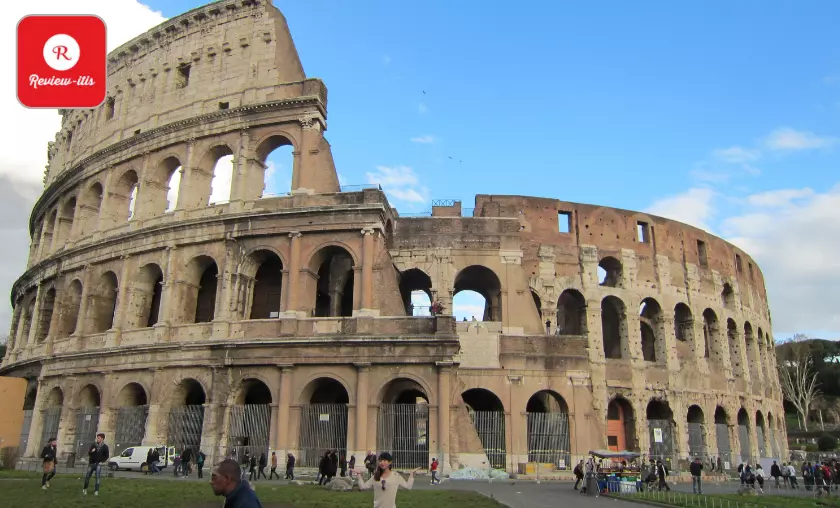
The amphitheater was 186 meters long by 156 meters wide, oval in shape, although it appears to be practically circular. The outer wall, fifty-seven meters high and built of controlled travertine marble with iron clamps instead of mortar, broken by many earthquakes, and its entire side buckled in the 1349 earthquake.
Tumbled stone was used to build buildings throughout Rome, but you’ll see the initial layers of pilasters and arches on the remaining side. Those on the ground floor are square Doric; the center, Ionian; and therefore the cousin, Corinthian. The outer wall of the rest of the amphitheater appears to be its original inner wall. Only fragments of their original painted stucco reliefs remain of the four main entrances.
Colosseum Interior
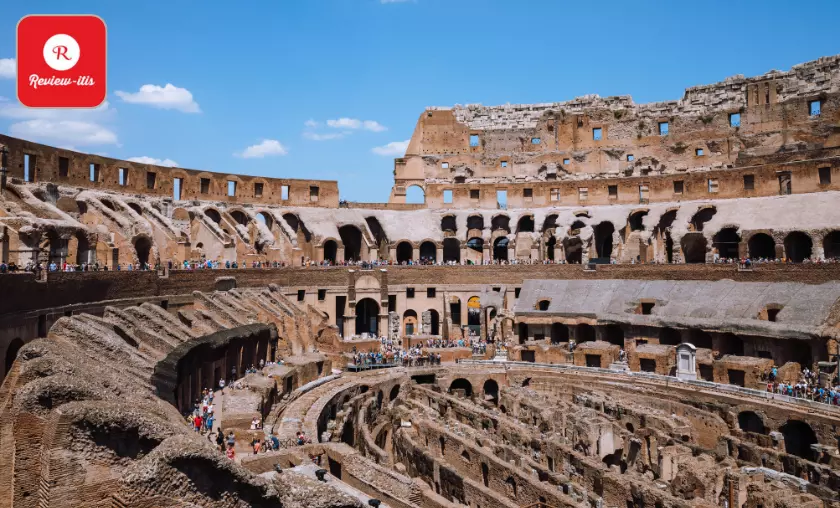
The purpose of the amphitheater and therefore the reason the Flavian emperors built it was absolute to satisfy the general public’s enthusiasm for games and shows. However, emperors and nobility attended jointly, each level observation determined by rank. The Emperor and thus the Vestal Virgins had the simplest views from the boxes at the podium’s north and south ends You’ll still see the senators’ names engraved within the world stone between these, which reserved for them.
Sabbatum noble families in the second course, and thus general public Sabbatum within the third and fourth level. The rows of seats and the interior corridors and stairs rigorously organized so that the 50,000 spectators could reach their places or leave in a few minutes.
At the highest level. There originally 240 flagpoles placed around the walls supporting AN’s canopy above the audience. The entire interior lavishly adorned. But only a few fragments survive to hint at how it must have given the impression in the 1st century.
A bronze cross at one end of the podium commemorates the Christian martyrs WHO believed to died here during Roman imperial times. There very little evidence that the podium was used for this. And thus the first mention of it as an area of Christian martyrdom was not until the 16th century.
The Hypogeum
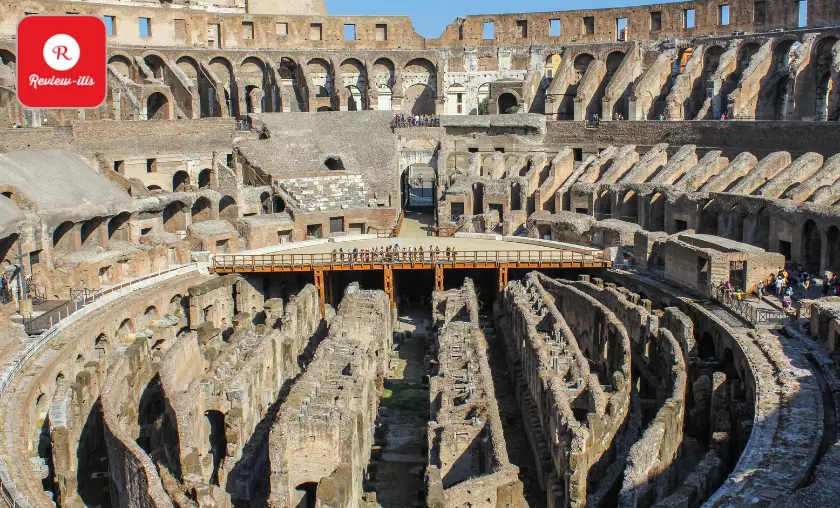
The floor of the arena was eighty-three by forty-eight meters, built of wood and covered with sand. Its lang syne has been destroyed. So today you will see the walls of the hypogeum. A huge two-story underground labyrinth of tunnels connecting training halls for gladiators. Cages for exotic wild animals, and warehouses that hidden underground.
Elaborate machines raised stages and caged animals to the podium, and depending on the quantity. The podium was usually filled with water for mock ocean battles.
Arch of Constantine
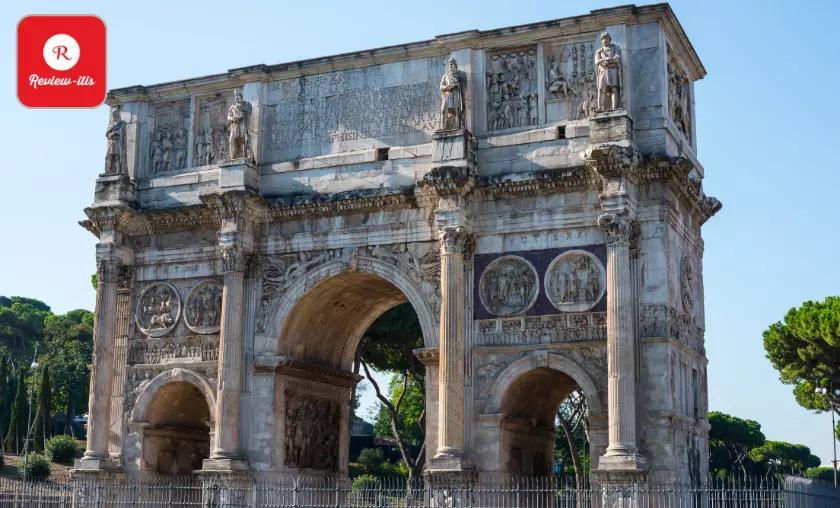
Standing next to the amphitheater, the Arch of Constantine is a monument that remembers Emperor Constantine as “liberator of the city and bringer of peace” when he triumphed at the Battle of Milvian Bridge in 312.
At twenty-one meters tall. It is the largest and best-preserved Roman monument. Despite being incorporated (along with the Colosseum) into the Frangipani family’s castle for hundreds of years. The arch is adorned with reliefs taken from earlier structures. So some of the scenes have little to do with Constantine and their triumph and include a boar hunt and a sacrifice to Phoebus Apollo.
Learn to Be a Gladiator

The gladiatorial college of Rome, in the manner of a hymenopteran insect near the amphitheater, operated by the Gruppo Storico Romano (historical group of Rome). Which focuses on the re-enactment of ancient Roman life and gladiatorial fighting. Wearing an authentic gladiator robe and belt, and using an ancient trainer’s arm. You’ll learn combat techniques as well as the culture and sports of the Roman gladiators.
After finishing your two-hour category, you will receive a certificate, AND you will be ready to participate in a non-compulsory gladiatorial tournament with prizes. Rome’s Gladiator School includes a cache of original weapons and other artifacts that you can visit (admission is included with your lessons).
Address: Via Appia Antica 18, Rome
Tips & Tours: How to Make the Most of Your Visit to the Colosseum
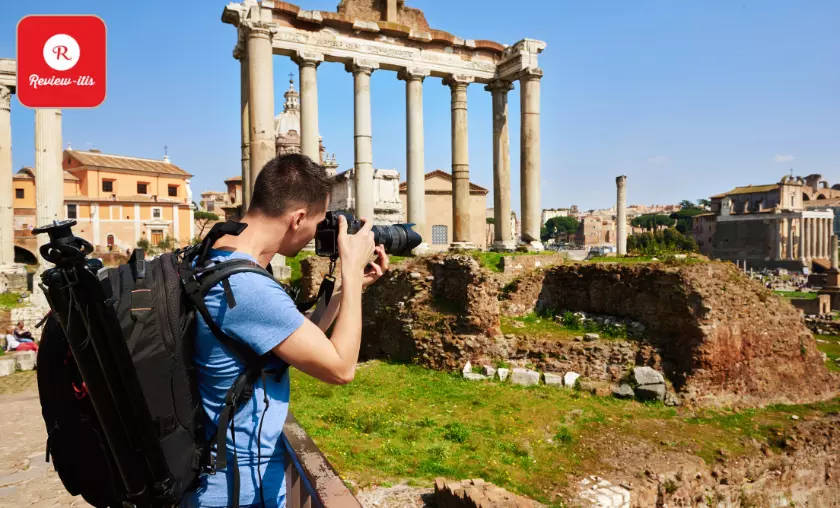
Visiting the amphitheater is one of the most popular things to do in Rome. So unless you arrive with a pre-booked tour. Expect to stand in line. Target-hunting tours can take you to areas that are not receptive to the end audience. The best times to arrive are early in the morning and around noon, once the tour bus crews visit for lunch.
- Guided Tour of the Colosseum: The best way to avoid a wait is to request a half-day skip-the-line walking tour: Of Ancient Rome and the amphitheater, which has the other advantage of a professional guide of showing details that you would otherwise miss. Skipping the long line means more time to understand the wonders of this exceptional structure and hear stories from its restless past.
- Tour of the Hypogeum and Upper Tiers: For an excellent in-depth experience and access to areas of the amphitheater that most visitors don’t see. Join the Ancient Rome and Amphitheater Tour: Underground Chambers, Arena, and Upper Level. You can stand where the gladiators fought, practice in the underground tunnels. See the enclosures where the lions broken, and enjoy the view from the highest level. Once you fully experience the amphitheater. These tours will also visit the Roman Forum and Palatine Hill for a complete Ancient Rome experience.
- Visiting the Colosseum on Your Own: The amphitheater is classified with the Forum and the Palatine Hill under a two-day inclusive price tag. You can avoid the inevitable lines at the amphitheater by getting your price tag at the entrance to Palatine Hill. Where lines are rare.
- Visiting the Colosseum with Children: This familiar icon of ancient Rome is one that children can recognize, and the gladiator stories are fascinating. To make your experience – and yours – even more rewarding, book the skip-the-line tour of the amphitheater for kids and families, as well as the Roman Forum and more. This 2.5-hour tous very designed for families with children, and therefore the historiographer guide can create the amphitheater and therefore the events that took place here change their status. Bypassing the long lines, your family can visit the stage, and forum. And other venues while participating in animated games and stories that are just as fun (and educational) for adults as they are for children.
- Comfort: Wear smart walking shoes. So you can walk on the uneven stones and climb for higher views of the grand interior. Large bags, backpacks, or suitcases do not seem to allowed inside, and there is no place to imagine them.
- Getting to the Colosseum: Take Line B, the Blue Line, of the Rome Metro to the Amphitheater Station. 2 stops from the Termini train terminal.
Nearby Attractions
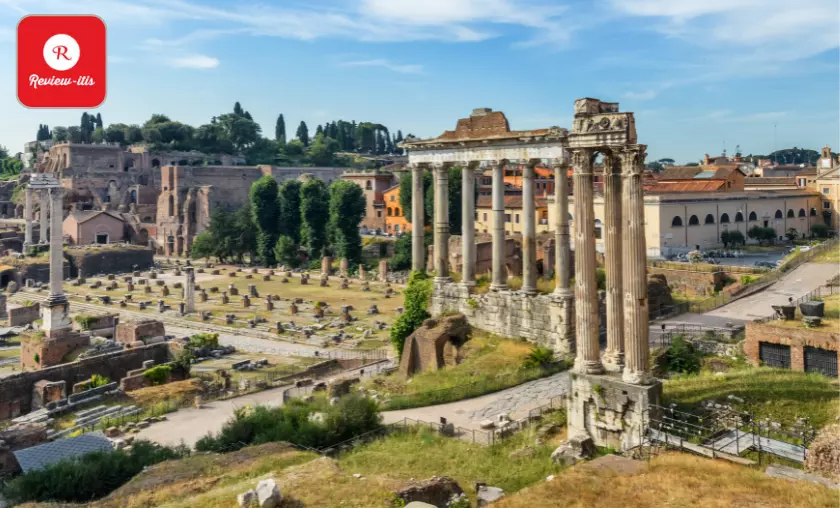
The Colosseum is surrounded by several of the most important vital sites of ancient Rome: the Roman Forum. The Palatine Hill and the Domus Aurea (Golden House) were recently excavated by Nero. The churches of San Pietro in Vincoli and the Basilica of San Clemente square measure a very short walk.
Restaurants and Cafés near the Colosseum
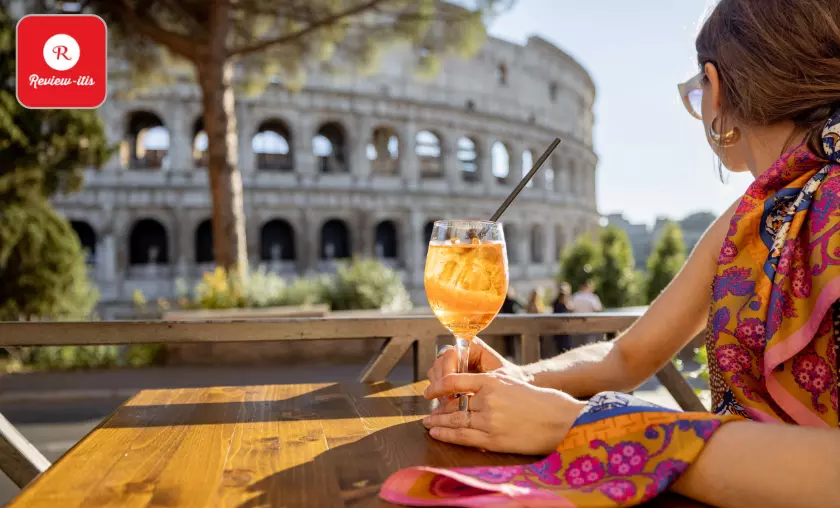
Directly opposite the entrance to the Colosseum, right at the rail system stop, is the Colosseo Rail System Caffe, serving casual fare, pizza, and entrees in a bright and cheerful setting. On a higher terrace, on Via Nicola Salvi, La Biga Ristorante Caffe has shaded tables. Facing the coliseum on the opposite side, the Royal Art restaurant can be an elegant place to eat with a rooftop terrace. Just around the corner on Via Head d’Africa, Osteria Angelino has been serving up ancient Roman dishes since 1899.
The best gelato is at Gelateria Fiscal Costanza on the other side of the same neighborhood on Via di San Giovanni in Laterano forty.
Where to Stay near the Colosseum
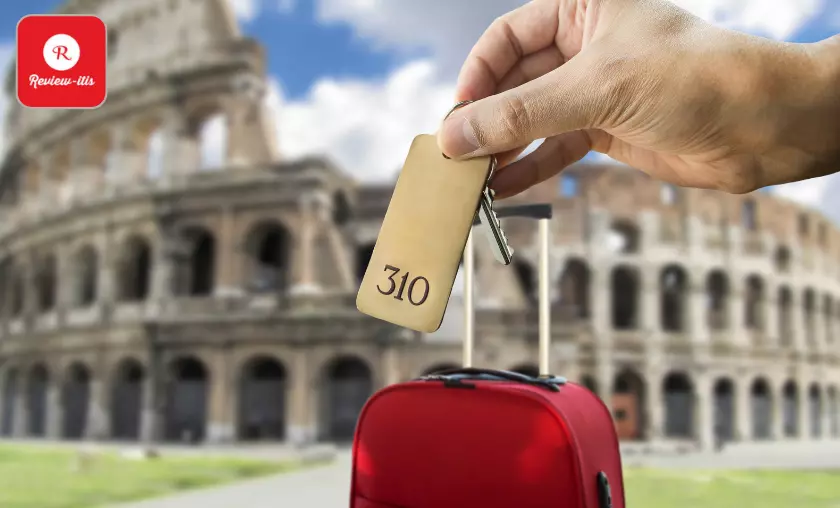
Facing the side of the Coliseum. On the other side of the Forum is the Celio neighborhood. A small quadrangle of streets between the Coliseum and the Basilica of San Clemente. For streets packed with tourist attractions, Celio offers a surprisingly native neighborhood feel. And you’ll find plenty of sensible lodging options here. 2 luxury hotels. The good and elegant Hotel Capo d’Africa and the Palazzo Manfredi – Relais & Chateaux, facing Oppio Park, have upper terraces where you will enjoy breakfast overlooking the Colosseum.
Also in Celio, the new luxury B&B Bellezza al Colosseo has custom Italian furnishings and in-room java machines. Within the same mid-range class. The Fori Imperiali Cavalieri building is north of the coliseum, on the edge of the Monti neighborhood.
Shopping near the Colosseum

For souvenir shopping, I like Roma, opposite Place del Colosseo, near the Royal Art restaurant. And memento Colosseo is just around the corner on Via di S. Giovanni in Laterano fourteen. You will find jewelers, boutiques, and art galleries in these streets. As well as a pharmacy and a Carrefour mini market. For a lot of focused searching, head north to the Monti neighborhood. Where you’ll find everything from vintage consumer goods to fine chocolate.
To read more similar articles, click here.
Thanks for visiting our Website. If you appreciate our work, kindly show us some support in our comments section. 🙂